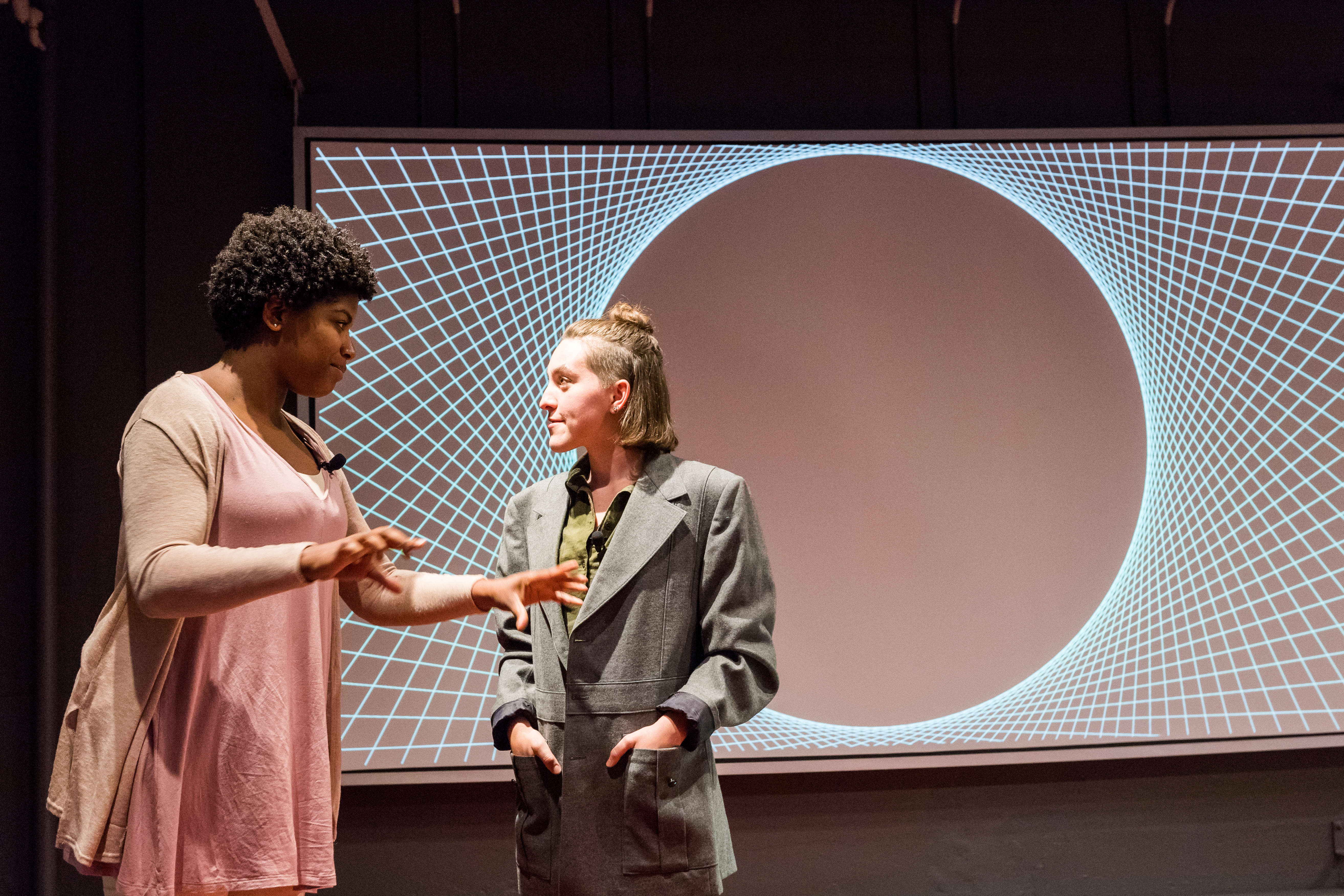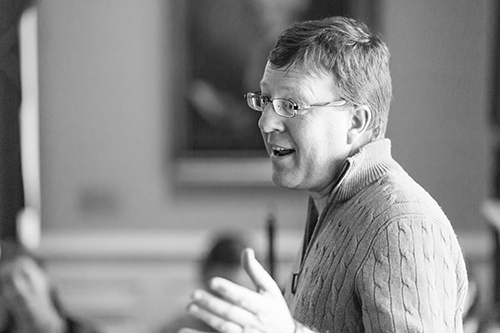A Cat, a Game Show, and a Ball of Yarn: A Play about Quantum Physics
-
-
slice.mit.edu
Filed Under
Recommended

A scene from Both/And. Credit: Justin Knight/Courtesy MIT Museum
“The universe is continually surprising us and always weirder than we think it is,” says Patrick Gabridge ’88 of his new quantum physics play Both/And. The production and accompanying MIT Museum exhibit “Comic Bell: Exploring Quantum Weirdness” illuminate some of the concepts behind the universe’s smallest building blocks and a new research project on quantum entanglement led by MIT physicists David Kaiser, Alan Guth, and Andrew Friedman.
“It was really neat to work on something that even the smartest physicists can’t draw in a picture,” said Gabridge. “In some ways, it took the pressure off of me.” To write Both/AndGabridge says he took a crash course in quantum physics, meeting regularly with MIT Professor David Kaiser for lectures and reading several books on the field.
Instead of a lengthy narrative arc, Both/And is an episodic 20-minute event with three enthusiastic actresses. At one point in the play, the characters act out quantum entanglement with the game show Delicious Entanglement. Two characters serve as entangled particles attempting to answer identically to questions about dessert when asked at the same time, while wearing earmuffs to prevent them from hearing the response of their co-participant.

Patrick Gabridge. Credit: Nile Hawver/Nile Scott Shots
According to the tenets of quantum entanglement, two particles can be connected no matter how far apart they are. Like the play’s game show participants, “if you ask a question of one, you automatically know something about the other particle instantaneously,” said Gabridge. Recent MIT research is focused on real-world testing to confirm that entangled particles are not responding the same way because of some third-party interference, called the freedom-of-choice loophole.
The play’s characters also use a stuffed animal, a cat, to explore Austrian physicist Erwin Schrödinger’s concept of superpositions. The cat is in a metal box and could be alive or dead, which makes one of the characters laugh hysterically and cry inconsolably within the same breath. “Until you observe it, you can’t know what they are,” she explains to her confused peers.
To illustrate one of the more shocking theories of quantum physics, the characters throw a turquoise ball of yarn among the three of them, getting tangled in the process. “What if parts of me are entangled with parts of my cats?” asks one. “In theory, there are some bits of us that are connected with some bits of lots and lots of other things,” said Gabridge.
Even Both/And’s title serves as a lesson in physics. “Things are not either/or in quantum physics, they are both/and until they are determined one way or the other, which applies to a lot of things in life,” he explained.
Both/And is a project of Catalyst Collaborative@MIT, the science-theater partnership between Central Square Theater and MIT. Learn more about Both/And’s performance times held throughout the summer.







